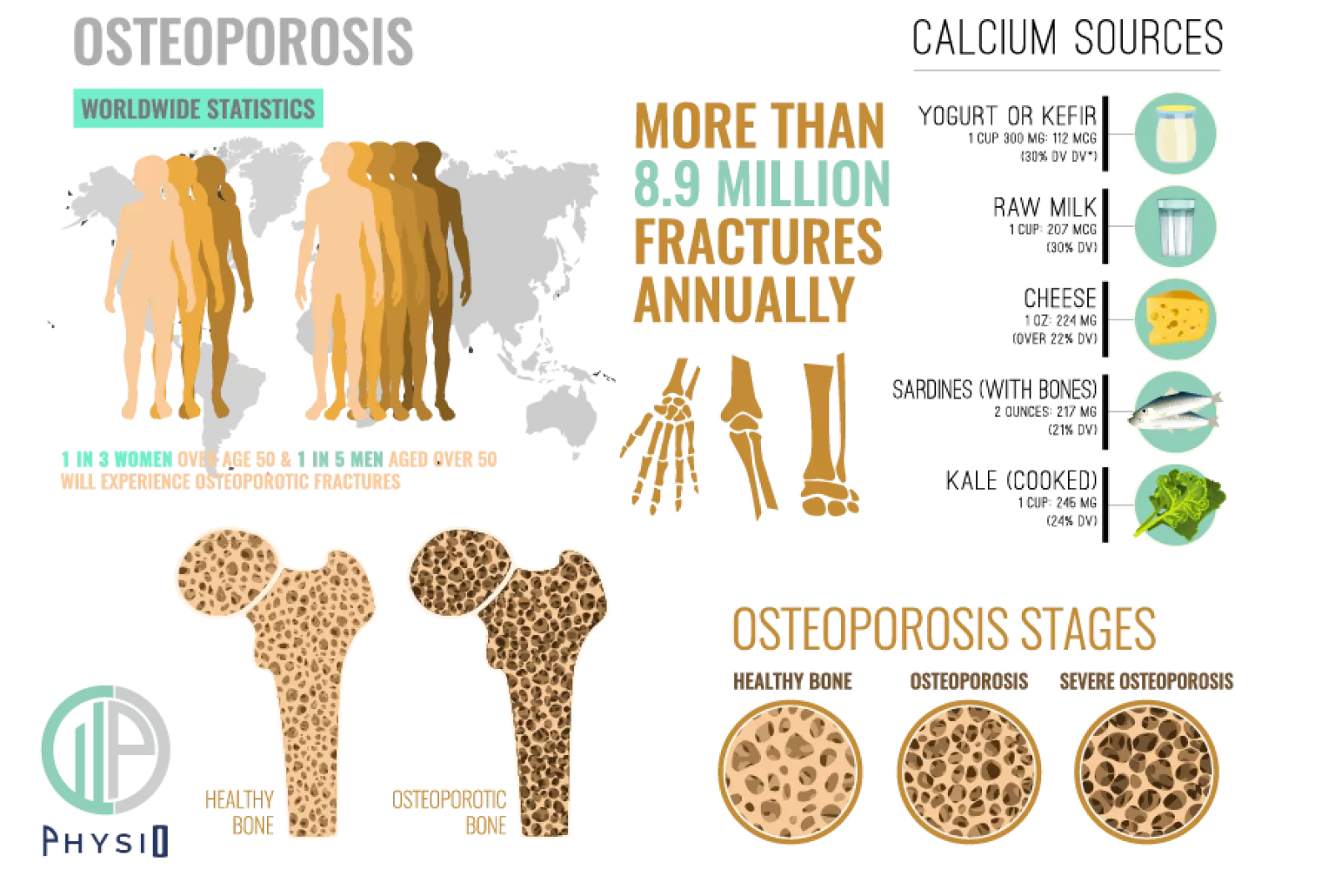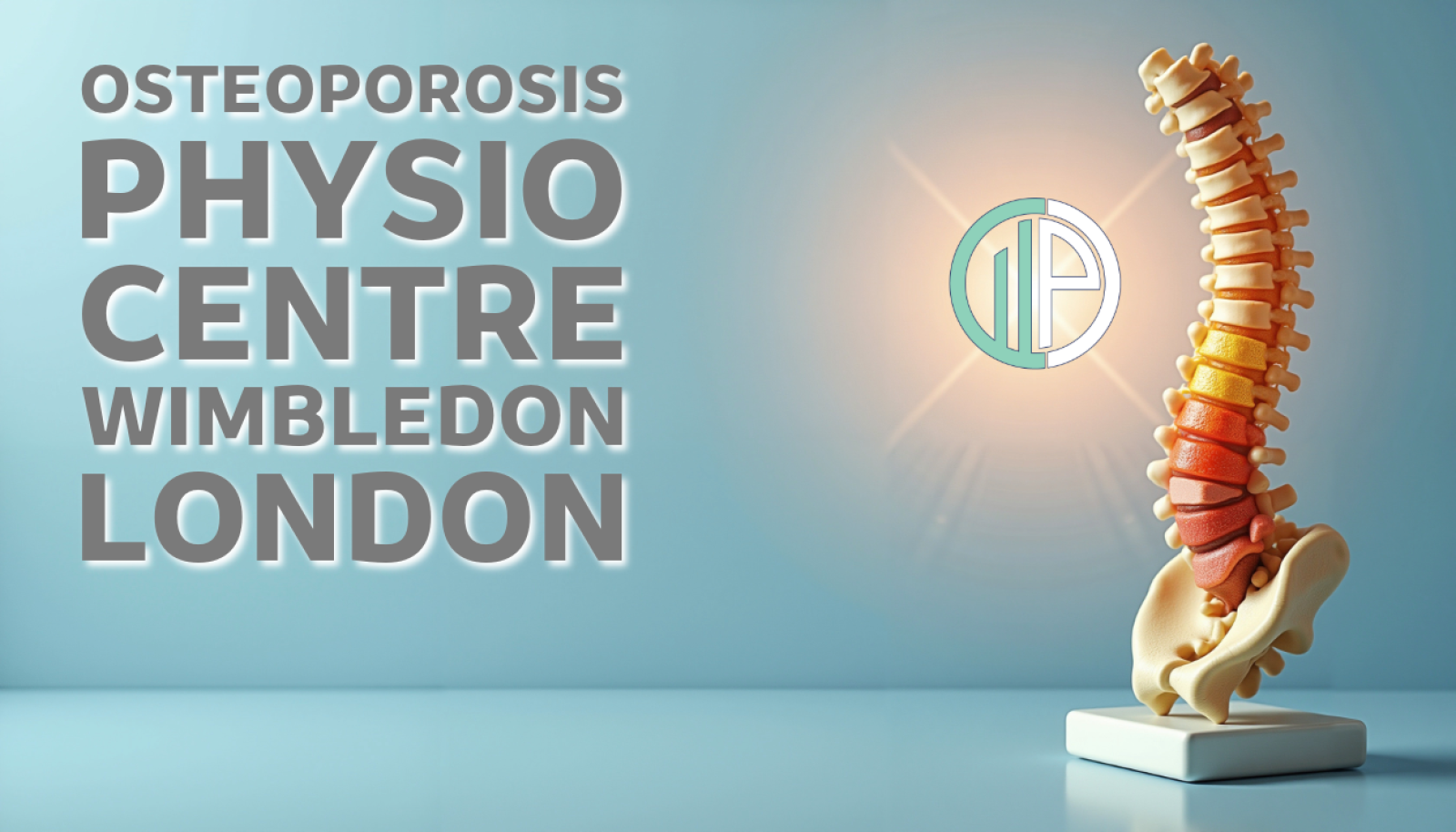Osteoporosis Service in Wimbledon, SW19
At Wimbledon Clinic Physio, based in the heart of Wimbledon at 1 St Andrews Close, SW19 8NJ, we provide a specialist physiotherapy-led service for the management of osteoporosis and osteoporotic fractures.
Our clinic is just a short walk from Wimbledon Quarter Shopping Centre, making us easily accessible for patients across South West London who are seeking expert care for bone health.
How Can We Help With Osteoporosis?
Physiotherapy plays a vital role in both the prevention and management of osteoporosis. At Wimbledon Clinic Physio, we provide:
- Graduated exercise programmes of strengthening and balance work to improve bone density, mobility, and confidence.
- Pain and fracture rehabilitation, helping patients regain function after osteoporotic fractures.
- Education and guidance to support self-management and lifestyle changes that slow down bone loss.
- Risk assessment to determine if you may benefit from bone density scanning or further medical care.
We also work closely with specialist osteoporosis consultants and can connect you with dieticians if additional nutritional advice is needed.
Who Can Benefit?
Our Wimbledon-based service is designed for:
- People at risk of developing osteoporosis.
- Those already diagnosed with osteoporosis, whether or not you’ve suffered a fracture.

What Is Osteoporosis?
Osteoporosis is a progressive condition where bones lose density, becoming fragile and prone to fractures.
- In the UK, 1 in 3 women and 1 in 5 men over 50 will suffer an osteoporosis-related fracture.
- Bone density naturally decreases from your 40s onwards, with women experiencing accelerated loss after menopause.
- Risk factors include genetics, smoking, alcohol use, early menopause, thyroid conditions, steroid use, poor diet, and low physical activity.
Our bones are living tissue, constantly breaking down and rebuilding. As we age, bone breakdown begins to outpace bone formation, leaving the skeleton weaker and more vulnerable.
(References: NICE 2012, International Osteoporosis Foundation)
Common Osteoporotic Complications
Wedge Vertebrae – The Most Frequent Spinal Complication
One of the most common complications of osteoporosis is the development of wedge vertebrae. This occurs when weakened spinal bones collapse at the front, creating a wedge-like shape. Over time, this leads to:
- Loss of height occurs as multiple wedge fractures accumulate.
- Buffalo hump (kyphosis) – a rounded, stooped upper back.
- Tightness across the chest caused by ribcage compression.
- Difficulty taking deep breaths due to reduced lung capacity.
These physical changes not only cause pain and stiffness but also affect breathing, posture, and confidence in daily life.
Hip Fragility and Secondary Complications
The hip is another common site of osteoporotic weakness. Loss of bone density in this region makes individuals:
- Individuals are more susceptible to arthritic changes due to added stress on weakened joints.
- More vulnerable to fractures after falls, often leading to surgery and long-term rehab.
At Wimbledon Clinic Physio, our tailored exercise programmes are designed to:
- Reduce joint stress while protecting vulnerable bone.
- Stimulate the body to deposit new bone where possible.
- Improve posture, balance, and mobility to prevent falls.
Why Females Are at Higher Risk
Women are particularly vulnerable to osteoporosis due to hormonal changes around menopause, when oestrogen levels drop and bone loss accelerates. But other vital contributors include:
- Medications such as Omeprazole (for reflux), which reduce calcium absorption.
- Deficiencies in magnesium, vitamin D3, and calcium.
- Borderline anaemia affects oxygen and nutrient delivery to bone tissue.
Identifying and correcting these issues before or alongside physiotherapy will maximise treatment outcomes. Our team can advise on when to seek medical input or dietary review.

How Is Osteoporosis Treated?
Treatment usually involves multi-factor management:
- Diet: Adequate calcium, vitamins, and minerals.
- Vitamin D: Essential for calcium absorption; mainly sourced from sunlight.
- Lifestyle factors: Quitting smoking and moderating alcohol consumption.
- Exercise: Regular weight-bearing and strengthening activity.
- Fall prevention: Reducing fall risk to prevent fractures.
Physiotherapy for Osteoporosis – The Benefits
The best way to manage osteoporotic fractures is to prevent them. Physiotherapy is proven to help:
- Strengthen your bones with tailored exercises that stimulate bone growth.
- Enhance posture and balance to lower the risk of falls.
- Reduce pain and restore function after fractures.
- Improve breathing and flexibility in cases of wedge vertebrae.
- Boost overall well-being by increasing confidence and independence.

Why Choose Wimbledon Clinic Physio?
- Based in the heart of Wimbledon, SW19, with free parking on-site (limited).
- Statutory registered physiotherapists with expertise in osteoporosis care.
- Access to advanced services, including digital rehab prescriptions and shockwave therapy (if needed for pain).
- Collaborative care with consultants, GPs, and dieticians.
- Recognised by leading insurers such as AXA, Aviva, Vitality, and The Exeter, as well as cash plans like Simplyhealth and Medicash.
Find a Clinic / Contact Us
📍 Address: Wimbledon Clinic Physio, 1 St Andrews Close, Wimbledon, London SW19 8NJ
📞 Phone: 020 8540 3389
🌐 Book Online Now
We’re just minutes from Wimbledon Station and easily accessible via local bus routes.
Take the first step in protecting your bone health – book your osteoporosis assessment today with our Wimbledon physiotherapy team.
Would you like me to add patient success stories or case study examples (e.g., someone recovering from a wedge vertebra or hip fragility) to make the page feel more personal and persuasive?